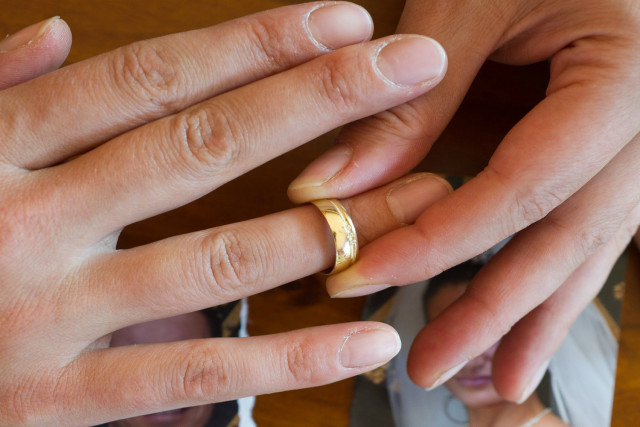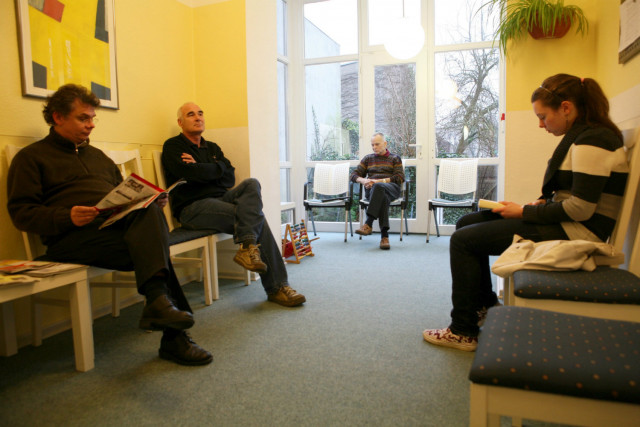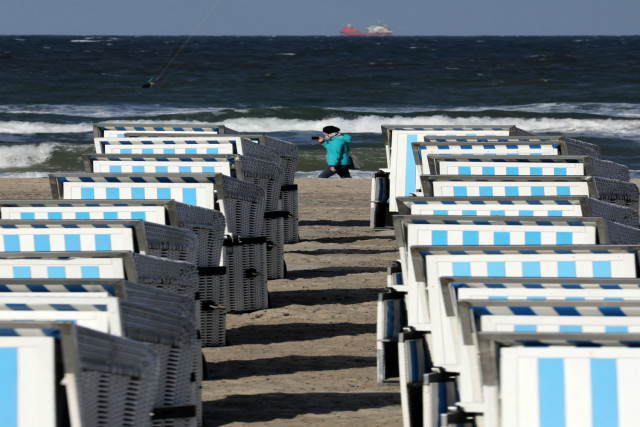From beer to babies: The 15 stats you need to understand Germans

Whether related to marriage or beer consumption, here are 15 fun statistics that describe how Germans live, work, play and think.
-
The average woman in Germany is 29.6 years old when she has her first child.
Most women in Germany have their first child around the age of 30.
In comparison to the US where women have their first child at 26.4 and France at 28.5 years, women in Germany welcome their first child into the world fairly late.
READ ALSO: Everything you need to know about having a baby in Germany
This could result from the increasing importance placed on a successful career. "First the job, then a family," is a mentality held by many.
Unlike in earlier days, most women seek out a career and do not desire to work at home. Not only because they strive for success in their line of work, but also because only a stable job can support themselves and eventually a family
-
The average age of first marriage for men in Germany is 33.4 years, and 30.9 years for women
Not only are less people marrying in Germany than in earlier times, but they are also marrying significantly later in life.
This is most likely due to the wish of finishing one’s education prior to committing to a marriage. In Germany, people also tend to finish their degrees later than in countries such as the US or UK.
READ ALSO: 'Ja, ich will': What it's like to get married in Germany
You might think that the average marriage age would be before the birth of a first child, but according to statistics it is, for women, approximately one year later!
-
Germans consume 104.2 litres of beer per capita

"Pils" in the exhibition on 500 years German brewing art in Mannheim. Photo: DPA
For many Germans beer is second in line to water.
But it's hard to blame Germans when their beer is so cheap and delicious.
Germany is the fourth largest consumer of beer worldwide. In comparison, the US is on ranks in 19th place with 74.8 litres consumed per capita.
READ ALSO: Why beer means so much to the Germans
However, Germany is not the greatest beer consumer in Europe. Compared to the Czech Republic with 183,1 litres per capita, Germany’s statistic is still pretty sobering.
-
The divorce rate in Germany is 46 percent

A women taking off her wedding ring in Brandenburg, Photo DPA
Almost half of Germany’s population eventually divorces their partner.
Divorce in Germany usually occurs after approximately 15 years of marriage and is usually initiated by the woman.
But there's some good news for hopeless romantics: the number of divorces in Germany is going down, with couples staying married for longer.
READ ALSO: Germans staying married longer, divorcing less
-
In 2019, 23.9 percent of women said that they often faced gender-based discrimination in the workplace
This problem is deeply anchored in the foundation of our system. In former times women stayed at home while the men went to work. By law, women were only allowed to go to work if their husband allowed it. And this law only changed in 1977!
READ ALSO: The 20 key stats that describe Germany today
This mentality is deeply manifested in many people’s subconsciousness and therefore hard to completely abolish in our society.
But Germany is trying to reduce this discrimination by enforcing gender quotas in the workplace, for example.
Since 2016, a gender quota of 30 percent was enforced for hiring women to supervisory board positions. This gives women a better chance of gaining executive positions.
READ ALSO: Germany female executives title is a 'paper tiger'
-
The pay gap between women and men in Germany is 21 percent
Last year, the Federal Statistics Office reported that women were paid 21 percent less than men in 2017, showing little progress from the year before.
It's a figure that puts Germany second only to the United Kingdom in Europe for having the worst gender pay disparity.
READ ALSO: This is how significant the gender pay gap is in Germany
-
As of 2018, 12.1 percent of soldiers in Germany’s army (Bundeswehr) were women

Female soldiers reporting to a farewell in Diez in Rhineland-Palatinate for comrades who are leaving to an international assignment. Photo: DPA
Considering that women were only permitted to join all branches of the army in 2000, this percentage is not as low as it may appear.
Germany has also had a female defence minister, Annegret Kramp-Karrenbauer, the country’s second.
The first, Ursula von der Leyen, took over in December 2013. Both women have been responsible for overseeing the Bundeswehr’s domestic and overseas’ operations.
Nowadays, there are almost 22,000 women from around 180,000 people in total.
READ ALSO: More women soldiers and less equipment. A look at Germany's army in numbers
-
The average German receives 24 packages per year. (The only country with more is China, at 70 per person per year)
This means that around 200 million packages must be delivered per year which is almost 550 thousand each day (which includes holidays).
The poor parcel messengers have an impossible job!
-
21.82 percent of Germans have visited a doctor in the last month (as of June 2019)

Waiting area at a medical practice in Kiel, Photo DPA
Over one fifth of the German population recently visited a doctor.
This could result from Germany’s great health care system, since you pay a monthly fee that covers most or standard examination.
This means you do not have to worry, money-wise, about going to the doctor for a regular check up.
But, this occurrence could also result from the fact that it is fairly easy to get a doctor’s excuse when you’re sick or simply feeling under the weather.
-
44 percent of caregivers for the elderly in Germany work part-time, whilst 56 percent are full-time.
This job is not highly sought out, and as such has a shortage of workers. This is why you constantly sees advertisements, in the U-Bahn for example, that promote this job.
READ ALSO: Explained: How Germany plans to fight its drastic shortage of workers
The majority of Germans spend holidays of 2-4 days in Germany (74.2 percent), with Bavaria the number one destination (16.6 percent)
Bavaria is a great place to enjoy the fresh air, go hiking, watch soccer or visit the Oktoberfest.
Plus, due to the Deutsche Bahn and many high-speed (ICE) train connections, you can travel anywhere in no time (travelling from the Ostsee (Baltic Sea) to Munich for example takes less than eight hours).
-
The most popular dessert in Germany is milk chocolate (47 percent)

Ritter Sports milk chocolate with whole hazelnuts, Photo DPA
Germans love sweets, and a quick and cheap dessert which can be purchased in either a supermarket, Späti (open-late shop) or gas station is chocolate.
There are dozens of varieties to pick from, and many of them are original German chocolates (such as Ritter Sport). Some kinds cost even less than a euro!
-
59 percent of German companies say that they use internet job portals to find staff. A total of 29 percent still use ads in print media.
Searching for jobs nowadays is easy: You simply type in your preferred job field into Google and Google spits out the offers.
These offers are usually found on job portals such as Stepstone or Stellenanzeigen, which accumulate job offers and allow you to search for your ideal job.
This makes it simple to browse through your option.
Most companies even accept or demand an online application either directly on their site or via email.
-
In Germany 4 percent of people say they pay with cryptocurrencies
Few people are familiar or even aware of cryptocurrencies, because it is a fairly modern and, for many, suspicious payment method.
The most common and well-known digital asset is Bitcoin which launched 2009.
READ ALSO: Are Berlin's bitcoin investors blinded by their enthusiasm?
-
34 percent of Germans spend their holidays in Germany

Rostock: A popular destination for vacation in the north of Germany, Photo DPA
In 2018, 34 percent of Germans spent their holidays in Germany, especially in the north. The second most popular destination was Bavaria. A great place to visit there is the castle Neuschwanstein.
READ ALSO: These are Germany's most beautiful and iconic castles
In 2018, the number one area for travellers seeking to leave Germany was Spain. The most sought out place here is Mallorca.
From second to fifth favourite, the destinations that Germans sought out outside of Germany, were Italy, Austria, Turkey and Scandinavia.
Around 0.125 percent of Germans visited Asia for their holiday.
Second after Asia, for destinations outside of Europe, is the US. Three percent sought out America for their travels.
All statistics come from Statista Deutschland unless noted otherwise.
Comments
See Also
- The average woman in Germany is 29.6 years old when she has her first child.
Most women in Germany have their first child around the age of 30.
In comparison to the US where women have their first child at 26.4 and France at 28.5 years, women in Germany welcome their first child into the world fairly late.
READ ALSO: Everything you need to know about having a baby in Germany
This could result from the increasing importance placed on a successful career. "First the job, then a family," is a mentality held by many.
Unlike in earlier days, most women seek out a career and do not desire to work at home. Not only because they strive for success in their line of work, but also because only a stable job can support themselves and eventually a family
- The average age of first marriage for men in Germany is 33.4 years, and 30.9 years for women
Not only are less people marrying in Germany than in earlier times, but they are also marrying significantly later in life.
This is most likely due to the wish of finishing one’s education prior to committing to a marriage. In Germany, people also tend to finish their degrees later than in countries such as the US or UK.
READ ALSO: 'Ja, ich will': What it's like to get married in Germany
You might think that the average marriage age would be before the birth of a first child, but according to statistics it is, for women, approximately one year later!
- Germans consume 104.2 litres of beer per capita

"Pils" in the exhibition on 500 years German brewing art in Mannheim. Photo: DPA
For many Germans beer is second in line to water.
But it's hard to blame Germans when their beer is so cheap and delicious.
Germany is the fourth largest consumer of beer worldwide. In comparison, the US is on ranks in 19th place with 74.8 litres consumed per capita.
READ ALSO: Why beer means so much to the Germans
However, Germany is not the greatest beer consumer in Europe. Compared to the Czech Republic with 183,1 litres per capita, Germany’s statistic is still pretty sobering.
- The divorce rate in Germany is 46 percent

A women taking off her wedding ring in Brandenburg, Photo DPA
Almost half of Germany’s population eventually divorces their partner.
Divorce in Germany usually occurs after approximately 15 years of marriage and is usually initiated by the woman.
But there's some good news for hopeless romantics: the number of divorces in Germany is going down, with couples staying married for longer.
READ ALSO: Germans staying married longer, divorcing less
- In 2019, 23.9 percent of women said that they often faced gender-based discrimination in the workplace
This problem is deeply anchored in the foundation of our system. In former times women stayed at home while the men went to work. By law, women were only allowed to go to work if their husband allowed it. And this law only changed in 1977!
READ ALSO: The 20 key stats that describe Germany today
This mentality is deeply manifested in many people’s subconsciousness and therefore hard to completely abolish in our society.
But Germany is trying to reduce this discrimination by enforcing gender quotas in the workplace, for example.
Since 2016, a gender quota of 30 percent was enforced for hiring women to supervisory board positions. This gives women a better chance of gaining executive positions.
READ ALSO: Germany female executives title is a 'paper tiger'
- The pay gap between women and men in Germany is 21 percent
Last year, the Federal Statistics Office reported that women were paid 21 percent less than men in 2017, showing little progress from the year before.
It's a figure that puts Germany second only to the United Kingdom in Europe for having the worst gender pay disparity.
READ ALSO: This is how significant the gender pay gap is in Germany
- As of 2018, 12.1 percent of soldiers in Germany’s army (Bundeswehr) were women

Female soldiers reporting to a farewell in Diez in Rhineland-Palatinate for comrades who are leaving to an international assignment. Photo: DPA
Considering that women were only permitted to join all branches of the army in 2000, this percentage is not as low as it may appear.
Germany has also had a female defence minister, Annegret Kramp-Karrenbauer, the country’s second.
The first, Ursula von der Leyen, took over in December 2013. Both women have been responsible for overseeing the Bundeswehr’s domestic and overseas’ operations.
Nowadays, there are almost 22,000 women from around 180,000 people in total.
READ ALSO: More women soldiers and less equipment. A look at Germany's army in numbers
- The average German receives 24 packages per year. (The only country with more is China, at 70 per person per year)
This means that around 200 million packages must be delivered per year which is almost 550 thousand each day (which includes holidays).
The poor parcel messengers have an impossible job!
- 21.82 percent of Germans have visited a doctor in the last month (as of June 2019)

Waiting area at a medical practice in Kiel, Photo DPA
Over one fifth of the German population recently visited a doctor.
This could result from Germany’s great health care system, since you pay a monthly fee that covers most or standard examination.
This means you do not have to worry, money-wise, about going to the doctor for a regular check up.
But, this occurrence could also result from the fact that it is fairly easy to get a doctor’s excuse when you’re sick or simply feeling under the weather.
- 44 percent of caregivers for the elderly in Germany work part-time, whilst 56 percent are full-time.
This job is not highly sought out, and as such has a shortage of workers. This is why you constantly sees advertisements, in the U-Bahn for example, that promote this job.
READ ALSO: Explained: How Germany plans to fight its drastic shortage of workers
The majority of Germans spend holidays of 2-4 days in Germany (74.2 percent), with Bavaria the number one destination (16.6 percent)
Bavaria is a great place to enjoy the fresh air, go hiking, watch soccer or visit the Oktoberfest.
Plus, due to the Deutsche Bahn and many high-speed (ICE) train connections, you can travel anywhere in no time (travelling from the Ostsee (Baltic Sea) to Munich for example takes less than eight hours).
- The most popular dessert in Germany is milk chocolate (47 percent)

Ritter Sports milk chocolate with whole hazelnuts, Photo DPA
Germans love sweets, and a quick and cheap dessert which can be purchased in either a supermarket, Späti (open-late shop) or gas station is chocolate.
There are dozens of varieties to pick from, and many of them are original German chocolates (such as Ritter Sport). Some kinds cost even less than a euro!
- 59 percent of German companies say that they use internet job portals to find staff. A total of 29 percent still use ads in print media.
Searching for jobs nowadays is easy: You simply type in your preferred job field into Google and Google spits out the offers.
These offers are usually found on job portals such as Stepstone or Stellenanzeigen, which accumulate job offers and allow you to search for your ideal job.
This makes it simple to browse through your option.
Most companies even accept or demand an online application either directly on their site or via email.
- In Germany 4 percent of people say they pay with cryptocurrencies
Few people are familiar or even aware of cryptocurrencies, because it is a fairly modern and, for many, suspicious payment method.
The most common and well-known digital asset is Bitcoin which launched 2009.
READ ALSO: Are Berlin's bitcoin investors blinded by their enthusiasm?
- 34 percent of Germans spend their holidays in Germany

Rostock: A popular destination for vacation in the north of Germany, Photo DPA
In 2018, 34 percent of Germans spent their holidays in Germany, especially in the north. The second most popular destination was Bavaria. A great place to visit there is the castle Neuschwanstein.
READ ALSO: These are Germany's most beautiful and iconic castles
In 2018, the number one area for travellers seeking to leave Germany was Spain. The most sought out place here is Mallorca.
From second to fifth favourite, the destinations that Germans sought out outside of Germany, were Italy, Austria, Turkey and Scandinavia.
Around 0.125 percent of Germans visited Asia for their holiday.
Second after Asia, for destinations outside of Europe, is the US. Three percent sought out America for their travels.
All statistics come from Statista Deutschland unless noted otherwise.
Join the conversation in our comments section below. Share your own views and experience and if you have a question or suggestion for our journalists then email us at [email protected].
Please keep comments civil, constructive and on topic – and make sure to read our terms of use before getting involved.
Please log in here to leave a comment.